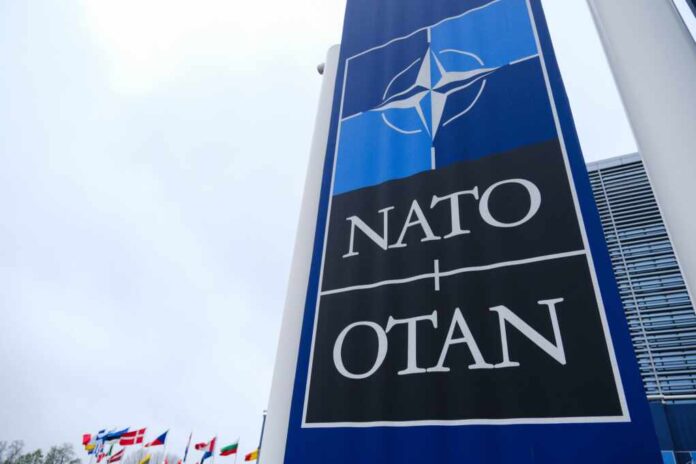
A potential “greyzone” attack by Russia threatens to destabilize Europe, testing NATO’s resolve and unity.
Story Highlights
- A senior Russian defector warns of Moscow’s “greyzone” attack on Poland before Christmas.
- The plan involves deniable strikes to provoke NATO without triggering a full-scale war.
- Increased Russian drone and aircraft incursions into NATO airspace have been reported.
- NATO is heightening its military readiness in response to these provocations.
Russia’s “Greyzone” Tactics and Their Implications
A high-ranking Russian defector has revealed that Moscow is planning a “greyzone” attack on Poland before Christmas. This strategy involves using ambiguous, deniable actions like drone incursions and airspace violations to provoke NATO and test its resolve without initiating an open war. This tactic echoes Russia’s historical use of hybrid warfare, as seen in Crimea and Ukraine, where covert operations were employed to achieve strategic objectives without overt military conflict.
Russia’s actions are part of a broader strategy to undermine NATO cohesion and exploit political divisions within the alliance. By avoiding direct confrontation, Russia seeks to apply pressure through ambiguity and deniability, challenging NATO to respond without escalating into a larger conflict. This approach is particularly concerning for frontline NATO states like Poland, Estonia, and Romania, which have experienced increased security risks and anxiety due to these provocations.
ANYONE FOR WWIII FOR CHRISTMAS ?
"Moscow is preparing a "greyzone" attack on Poland before Christmas. The Kremlin is planning a non-nuclear strike on Polish territory – a limited but deliberate act designed to test NATO’s response and trigger political destabilisation in… pic.twitter.com/QRT8zFgGKM
— jcdurbant (@jcdurbant) September 21, 2025
NATO’s Response to Russian Provocations
In response to the increased incursions, NATO has ramped up its military presence and readiness along its eastern flank. The UK has deployed RAF Typhoon jets to Poland as part of NATO’s Eastern Sentry operation, while the US, France, Germany, Denmark, and Sweden have also enhanced their military activities in the region. This heightened alertness aims to deter further Russian aggression and reassure NATO’s eastern members of the alliance’s commitment to collective defense.
The strategic significance of the Suwałki Gap, a narrow corridor linking Poland to the Baltic states and separating Russia’s Kaliningrad exclave from Belarus, is crucial in this context. Russian activities in this area are seen as particularly provocative due to its importance for NATO’s defense posture. As a result, NATO faces the challenge of calibrating its response to avoid escalation while maintaining a credible deterrence against Russian provocations.
Watch:
Potential Consequences and Future Outlook
The short-term implications of Russia’s “greyzone” tactics include heightened military alertness, increased risk of accidental escalation, and political pressure on NATO to respond decisively. In the long term, inconsistent responses could lead to the erosion of NATO unity and an increased risk of further Russian hybrid operations. Additionally, there could be potential arms buildups in Eastern Europe as countries seek to bolster their defenses against these threats.
The ongoing situation emphasizes the need for NATO to remain vigilant and adaptive in its strategies to counter hybrid threats effectively. While the warning from the Russian defector is taken seriously, officials emphasize that there is currently no indication of a planned full-scale invasion—only limited, deniable actions. As intelligence assessments continue, NATO must ensure a robust and unified response to uphold its credibility and maintain regional stability.
Sources:
The Express – Russia’s ‘greyzone’ invasion plan to start WW3 before Christmas revealed by defector
The Express – Putin warned over repeated violations of NATO airspace
Endtime Headlines – Russia preparing “greyzone” attack on Poland before Christmas risking WW3

























